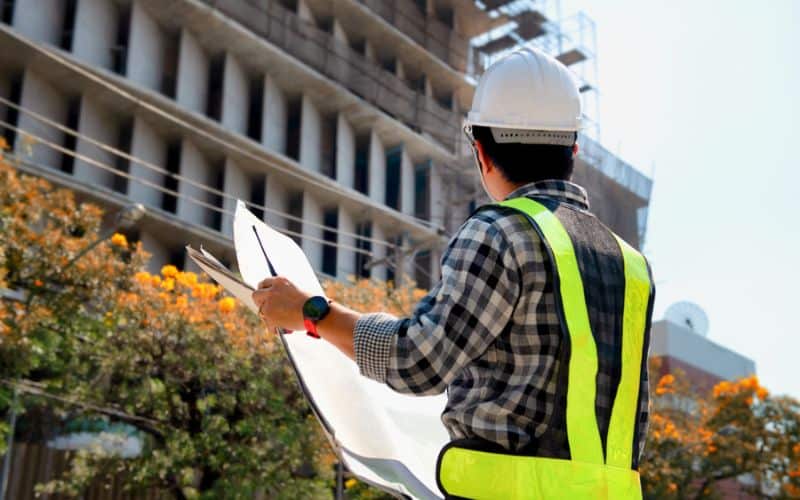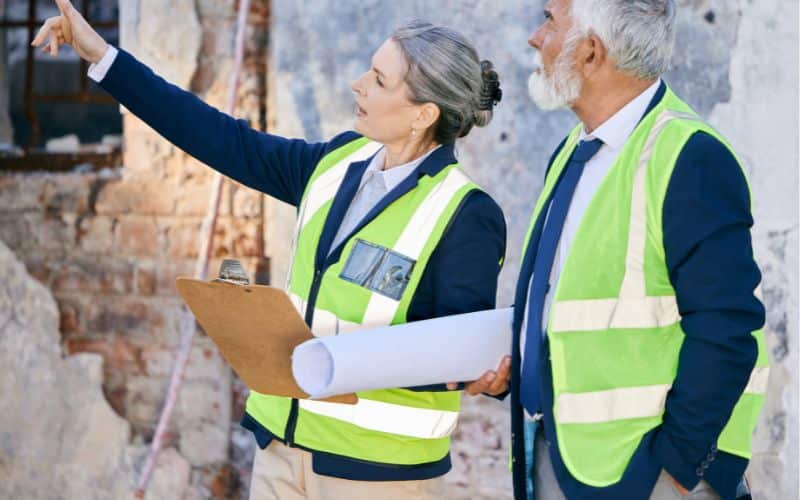500 Hood Road, Suite 320Markham ONL3R 9Z3

Every building can benefit from having a regular building envelope assessment conducted. While especially important at certain times, such as when considering whether to buy a commercial building or when planning renovations, these types of condition assessments should be done annually.
Your building envelope system is what keeps moisture and dirt out, and helps the building maintain a comfortable temperature and good air quality. An assessment indicates how well it is doing that, whether any components are damaged or wearing out, and recommends what maintenance is needed. If there are any unsafe conditions, these are discovered early. Also maintenance and repairs can be prioritized, budgeted for, and scheduled. But the question is, how to conduct a building envelope assessment? What needs to be assessed and what kind of assesment to conduct.
Although this discusses how a building envelope is assessed, and what needs to be checked, this type of assessment is a comprehensive analysis requiring special tools and the expertise of a qualified inspector. Because of the specialized measurement tools and expertise needed to interpret findings, a professional assessment is best. As an owner of commercial buildings, the critical part of this process is to research and find an experienced, professional assessor who provides thorough inspections and report documents.

General condition assessments will look at the building overall for damage and deterioration, including foundations, building sites, and grounds. Interior building components, structural systems, including the structural framework for walls, floors and roofs are assessed, along with mechanical systems, including HVAC, electrical, plumbing and others. Regulatory compliance aspects are also considered.
While a general assessment will also review some building envelope elements, including roofing systems, exterior finishes, doors and windows, a building envelope assessment is a much more detailed and in-depth assessment of the envelope building systems only, to determine how they are functioning and what condition elements are in.
Architectural drawings, structural plans, maintenance and repair records are all reviewed thoroughly to provide a full background of the building. This provides insights and highlights potential areas of concern to help guide the assessment. The on‐site part of the building's assessment is then conducted, usually starting with the interior, and then progressing to the building's exterior. Assessments are aimed at getting snapshots of the current condition of buildings at the time of the inspection.
After the assessment, a report is prepared to document all observations noted, both positive and negative, including unsafe conditions, along with recommendations.
These recommendations will advise on the expected lifespan of walls, windows, roof systems, and other building systems that are part of the building envelope. Expert recommendations for maintenance or repair to prevent potential issues are given, with recommended timelines and priorities.

All elements playing a role in the building envelope and its systems need to be inspected, as well as any building elements that will show signs of building envelope issues. The on-site inspection provides the bulk of the valuable information and forms the basis of the recommendations.
Interiors are examined for signs of dampness and moisture damage, leakage, draughts, and other signs the building envelope is not working as intended.
Windows are a key element in the building envelope. Windows are checked for dampness or wetness and musty smells, and surrounding structures are examined for damage or wear. Moisture proofing and air tightness is checked with special equipment. The amount of deterioration, damage, and level of deficiency is noted. The various window components, weatherstripping, glazing sealants, and hardware are thoroughly reviewed.
Exterior walls and the roof are checked for damages and issues. Flashing and membranes on roofs are checked to ensure water-tightness.
There is a wide range of testing that can be done, in addition to expert visual inspection. There may be exploratory dismantling of structures and materials to fully assess condition, and component testing may be necessary. Samples may also be taken for lab testing.
Curtain wall testing is done to assess air infiltration, structural load, and water penetration.
Temperature, humidity, and moisture readings are taken throughout buildings. Moisture mapping, to clearly show where wet areas that need drying and addressing, is done. A spray nozzle is used also to test water penetration.
Thermographic scanning and infrared thermography imaging is used to diagnose heat loss from draughts. Air leakage can also be tested via smoke pencils and other such methods.
Roof uplift resistance testing measures how well the membrane in the roofing is affixed and if it will be subject to lifting during winds.
There are many other tests that may be used as necessary, such as sound testing of exterior surfaces when delamination is suspected, and others that depend on your specific situation.

At ABSI, we can complete a professional building envelope assessment to ensure you are aware of potential issues as soon as possible, so they can be addressed in a cost-effective way. We will prepare a comprehensive report to provide you with superior information to plan maintenance and repairs in the best manner.

Naji Hassan, a renowned professional in Building Science and Engineering, brings a wealth of knowledge and experience to his field. Educated at Beirut Arab University and Harvard Business School Online, Hassan has honed his expertise in structural and municipal engineering, building science, and business management. As the President of Accent Building Sciences and an experienced Senior Project Manager, he has made significant strides in building envelope engineering, building condition assessments, and energy retrofit programs. His commitment to innovation and excellence is evident in his approach to large-scale project management and his active participation in industry organizations. Hassan is not only a leader in his field but also a prolific writer and thought leader. He regularly shares his insights and experiences through articles on LinkedIn, which can be found at LinkedIn Articles. Additionally, he maintains a blog where he delves deeper into various aspects of building science, accessible at Accent Building Sciences Blog. Outside of his professional pursuits, Hassan enjoys travel, golf, languages, gardening, and music, reflecting his diverse interests and well-rounded character. Naji Hassan's journey in building science and engineering is not just a career but a testament to his lifelong dedication to learning, teaching, and inspiring others in his field.

500 Hood Road, Suite 320Markham ONL3R 9Z3